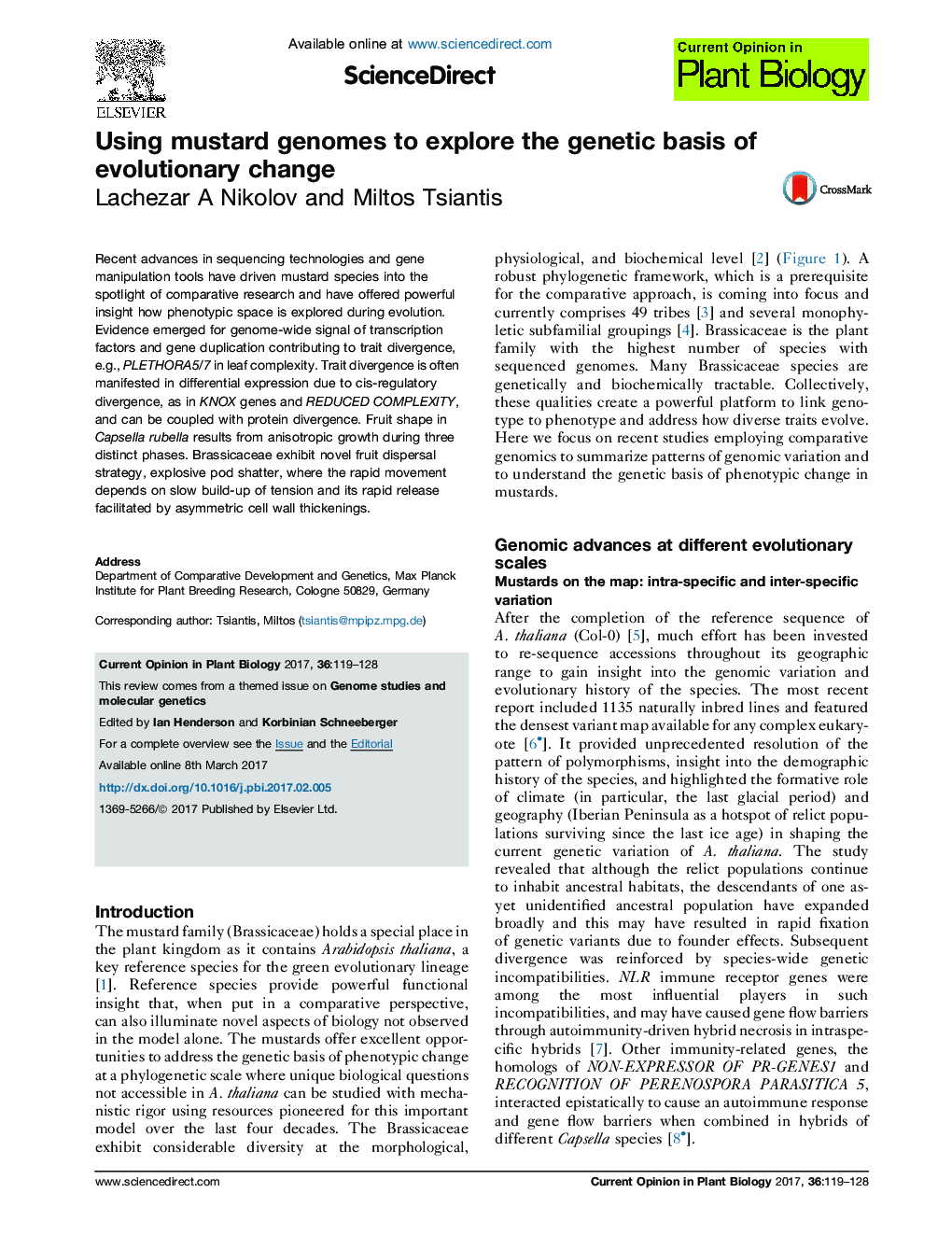| Article ID | Journal | Published Year | Pages | File Type |
|---|---|---|---|---|
| 5517465 | Current Opinion in Plant Biology | 2017 | 10 Pages |
â¢Brassicaceae feature the highest number of sequenced genomes of any plant family.â¢Genomic variation is harnessed to reconstruct their evolutionary history.â¢Brassicaceae genomes experienced a series of genome duplications.â¢Leaf shape evolved via coupled regulatory and coding sequence neo-functionalization.â¢Explosive pod shatter in Cardamine was driven by asymmetric lignin deposition.
Recent advances in sequencing technologies and gene manipulation tools have driven mustard species into the spotlight of comparative research and have offered powerful insight how phenotypic space is explored during evolution. Evidence emerged for genome-wide signal of transcription factors and gene duplication contributing to trait divergence, e.g., PLETHORA5/7 in leaf complexity. Trait divergence is often manifested in differential expression due to cis-regulatory divergence, as in KNOX genes and REDUCED COMPLEXITY, and can be coupled with protein divergence. Fruit shape in Capsella rubella results from anisotropic growth during three distinct phases. Brassicaceae exhibit novel fruit dispersal strategy, explosive pod shatter, where the rapid movement depends on slow build-up of tension and its rapid release facilitated by asymmetric cell wall thickenings.
Graphical abstractDownload high-res image (128KB)Download full-size image
